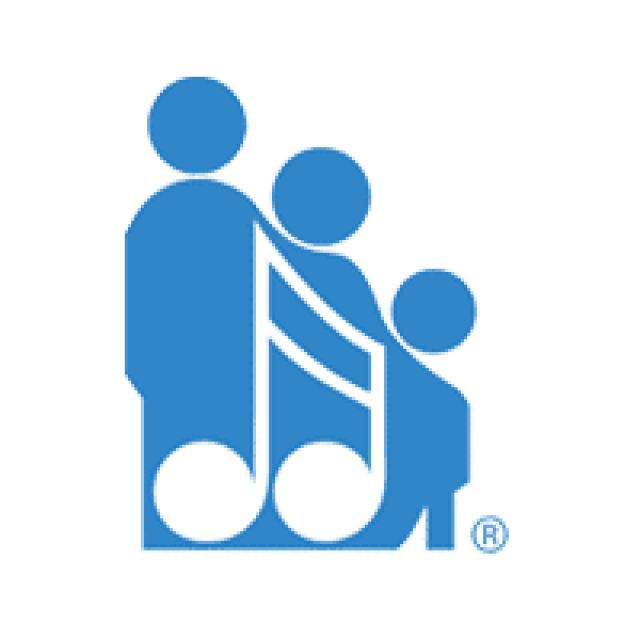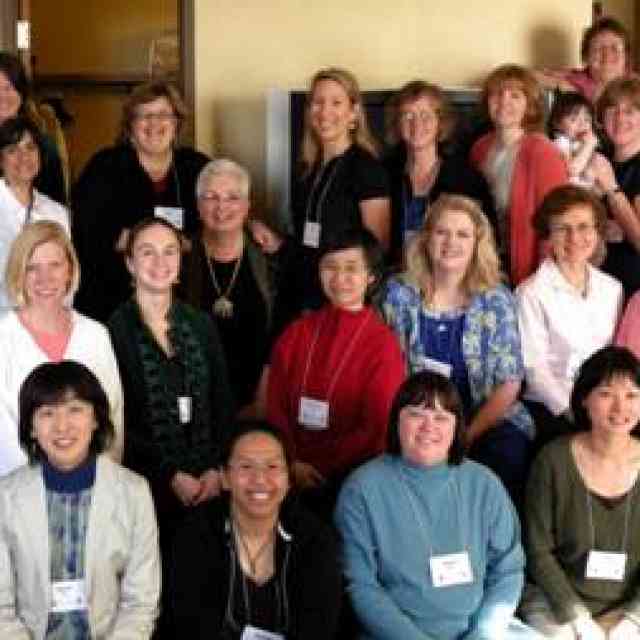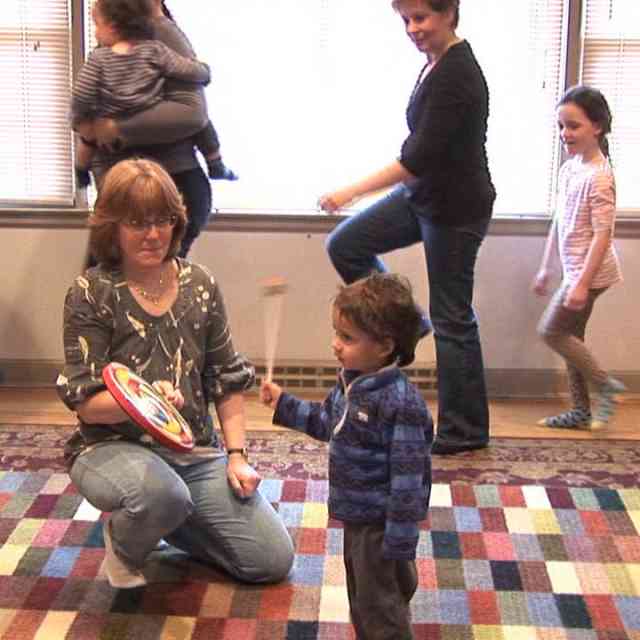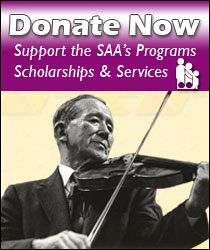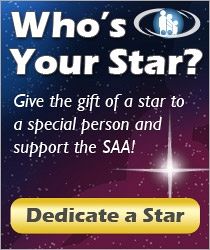By Mary Halverson Waldo and Stephanie Pedretti
In what world can you walk into a North American school classroom and hear ensembles of recorder students playing in harmony, with a beautiful sound? The answer to this question lies in an environment of creative collaboration between two educational philosophies that complement each other at every turn.
When we in the Suzuki sphere speak about the formative influence of a positive environment, we include caring family members, dedicated teachers, and an inspiring peer group—a whole supportive community! I experienced this kind of community during a workshop organized by Suzuki teachers Stephanie Pedretti (winds) and Pam Hughes (strings), along with a Waldorf school, in the town of Viroqua, Wisconsin. Although there was a diverse program at the workshop, I as a guest recorder teacher was privileged to experience the following activities:
The Pleasant Ridge Waldorf School recorder groups and ensembles in grades 3–8
Waldorf classroom teachers in a recorder tone and technique session
Recorder students of Stephanie Pedretti, in master classes and group lessons
A music and movement session for recorder, flute, and string families, in the baroque dance styles of bourree and minuet
An acoustic dance band that invited Suzuki wind and string students to play traditional tunes with them
The Viroqua Festival for “Wisconsin Federation of Music Clubs,” with a variety of student performers and teacher adjudicators from throughout the area
Intrigued by the quality of musicianship at this collaborative workshop, I invited Waldorf and Suzuki winds teacher, Stephanie Pedretti into the following conversation.
Mary Halverson Waldo: Tell me about your position at the Pleasant Ridge Waldorf School (PRWS).
Stephanie Pedretti: I’m one of two music teachers at PRWS and I’ve been here for eight years, teaching general music in grades 1–5, and a recorder ensemble for students in grades 6–8.
MHW: Waldorf students seem to learn and memorize music with remarkable ease. Is there something in this approach that supports these skills?
SP: Music and other arts are woven into a typical Waldorf school day. Students have the chance to sing and participate in other musical activities throughout the day with their class teacher and in some of their other subject classes, not just in music class.
Students also memorize poems, verses, and songs. Classes often share what they have been learning at informal Friday assemblies, which are open to the community. The class presentations are thought of as sharing with the community rather than performing for an audience, and they help students to be comfortable with singing, dancing, playing instruments, or presenting other classwork in a public but very supportive environment.
MHW: How do you incorporate Suzuki philosophy in your teaching, and what other pedagogical influences do you bring to the classroom?
SP: It is fairly common to find music teachers in Waldorf schools who have a Suzuki background. Both philosophies prioritize developing the character of the child, educating the whole child, fully developing their human potential, and creating life-long learners. In both approaches, we recognize that young children learn through imitation, so we need to take care in creating an environment that is worthy of being imitated.
Learning is experiential, with the intellectual part coming when the child is ready. In the Waldorf classroom, we develop the aural model by singing songs before we learn to play them on the recorder. Both Waldorf and Suzuki philosophies value beauty and form, such as playing with beautiful tone and good intonation, with a balanced, natural posture as the foundation. Encouragement is also important—encouragement of the students by their teachers and parents, as well as encouragement of the students to support one another. While parents are not present in the Waldorf music classroom, I do keep them informed by email about what is happening in class, and I ask them to support their children in developing the habit of regular home practice.
My Suzuki recorder training is the basis for my approach to teaching recorder in the classroom. I mainly use repertoire from the Suzuki Recorder School Volume One with my beginning recorder classes, along with other simple songs with which the students are familiar from the Waldorf classroom. I find it works better to focus on fewer songs, rather than having students learn each of the thirty-plus songs in Book One as I would if they were taking private lessons.
While Waldorf and Suzuki form the foundation of my teaching, I’ve also been influenced by Orff and Dalcroze. These approaches have inspired me to add movement as an integral part of classroom music activities.
MHW: Describe the PRWS music program, and how you incorporate the recorder into your curriculum.
SP: General music begins in grade 1 and continues through grade 5. In grades 4 and 5, strings are added to music classes. Grades 3–5 include recorder instruction. Starting in grade 6, students chose to join either the Recorder Ensemble or the String Orchestra, and these two ensembles often combine to form a full orchestra.
Beginning recorder, in grade 3, involves learning entirely by ear and imitation. At the same time, fundamentals of music reading are introduced separately. Students continue playing the soprano recorder in fourth grade. For these two years, we work on foundational techniques through songs in the first octave of the recorder. Partway through the fourth grade, students start reading music while playing, and they also learn simple harmony parts.
In grade 5, a beginning recorder ensemble is formed, with sopranino, soprano, alto, tenor, and bass. Students have opportunities throughout the year to try out the different sizes. The Grade 6–8 Recorder Ensemble is made up of approximately 16–18 students. Having a mix of students in different grades, with different levels of musical experience, allows students to help each other and learn from each other.
Mary, after you visited our school and offered a recorder technique session with the faculty, many of them inquired about starting a recorder ensemble. Last spring, some of these teachers joined with the student Recorder Ensemble to play at one of our Friday assemblies and later performed as a Faculty Recorder Ensemble. I think it was a great experience for the students to see their teachers doing this!
MHW: Is your recorder instruction at the school completely in classroom settings?
SP: Yes, but occasionally I’m able to squeeze in a bit of extra help for individuals or small groups during the school day. Each grade currently has between twelve and eighteen students.
Usually, I also have a few of the Waldorf students taking private lessons with me after school, but this is on their own initiative and not part of the school music program.
MHW: As the recorder program has evolved, what has prepared the fifth through eighth graders to play with such noticeable fluency and overall quality of sound?
SP: Thank you! I work hard to focus on tone and musicality with the students and I’m glad it shows! Early on, we incorporate a lot of listening activities in music classes. In third grade, I take time with the class in developing their tone on the first few notes before gradually expanding their range. We do a lot of articulation work on and off the recorders as well. As they get more comfortable with the instruments, we can focus on listening to the group sound—breathing together, blending, and matching style. When students reach fifth grade and beyond, I think they are at a point developmentally where they are ready to take these concepts to a higher level in their playing.
MHW: What performance opportunities do your recorder students have?
SP: Our two big music program events are our Fall Concert for students in grades 5–8 and Spring Concert for students in grades 4–8. Some students in grades 6–8 choose to participate in the Solo and Ensemble Festival sponsored by the Wisconsin School Music Association. Occasionally, I have classes share the music we’ve been working on in our more informal Friday assemblies.
MHW: I am grateful for the deep inspiration of working with this vibrant, collaborative community of Suzuki and Waldorf teachers, and I hope to return again soon!
